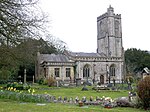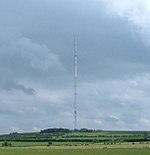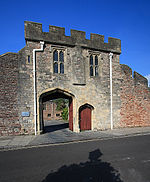Mendip Hospital
Defunct hospitals in EnglandFormer psychiatric hospitals in EnglandGrade II listed buildings in Mendip DistrictHospitals in Somerset

Mendip Hospital opened in 1848 as the Somerset and Bath Pauper Lunatic Asylum at Horrington, near Wells, in the English county of Somerset. As a county asylum, it was replaced by Tone Vale Hospital in 1897, but it continued to house long-stay elderly and mentally infirm patients. It finally closed in 1991, when the buildings were converted into houses and apartments.
Excerpt from the Wikipedia article Mendip Hospital (License: CC BY-SA 3.0, Authors, Images).Mendip Hospital
Lower Chapel Court, Mendip St Cuthbert Out
Geographical coordinates (GPS) Address Nearby Places Show on map
Geographical coordinates (GPS)
| Latitude | Longitude |
|---|---|
| N 51.2155 ° | E -2.6157 ° |
Address
Lower Chapel Court
Lower Chapel Court
BA5 3DF Mendip, St Cuthbert Out
England, United Kingdom
Open on Google Maps










